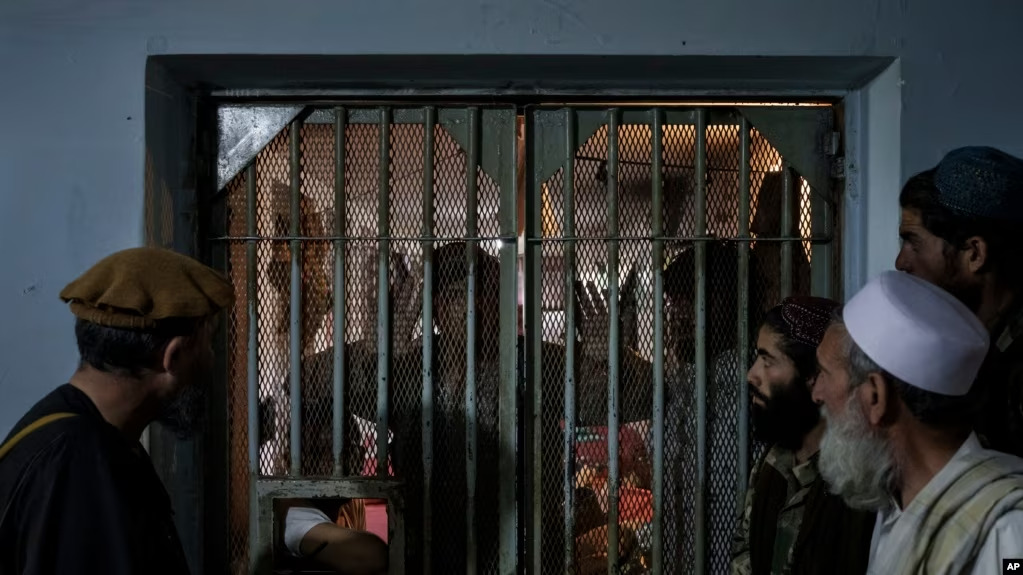The Lack of Combatant Status in Non-International Armed Conflicts
Introduction
In the law of armed conflict, the notion of combatant status and its related protections take on different dimensions in non-international armed conflicts (NIACs). Unlike its somewhat more straightforward application in international armed conflicts (IACs), combatant status does not exist in NIACs. Instead, on the part of rebel groups there are those who take on a continuous combat function and therefore can be targetable at any time even when indirectly participating in hostilities and there are civilians directly participating in hostilities. This essay delves into the complexities of determining this status and the potential extension of prisoner-of-war (POW) protections to belligerents in NIACs.
Status in International Armed Conflict (IACs)
In the context of IACs, combatant status holds a distinct and well-established position. It entails certain privileges and protections, chief among them being the legitimacy to engage in armed hostilities without fear of prosecution as long as actions are in accordance with the laws of war. Combatants in IACs are also entitled to POW status upon capture, which affords them comprehensive protections during their detention, including protection from inhumane treatment, the right of respect for their persons and honour, the right to retain their personal property, the right to send and receive correspondence with family, as well as the right to receive aid from the ICRC. Article 4 of the Third Geneva Convention which defines the criteria for combatant status and Article 43 of the Additional Protocol I (API) which relaxes further these criteria for those states party to the treaty. These legal instruments outline the conditions and rights associated with combatant status, ensuring that those who meet the criteria are protected in armed conflicts.
Status in Non-International Armed Conflicts (NIACs)
The scenario in NIACs is notably different. Combatant status, as recognized in IACs under the IHL, does not directly apply. Individuals involved in NIACs do not enjoy combatant immunity and POW status provided by the Third Geneva Convention and API. Instead, they are categorised as ‘civilians taking part in hostilities’ as per Article 13(3) of Additional Protocol II (APII) or as individuals having a ‘continuous combat function’, a concept laid down by the International Committee of the Red Cross (ICRC) through its Interpretive Guidance.
The notion of ‘continuous combat function’ is determined by an individual’s role within an organised armed group. This distinction is crucial in highlighting who can be targeted in a NIAC, even if they are not engaging in hostilities. Despite not receiving the same privileges and protections as combatants in IACs, these individuals are still entitled to certain protection under IHL, such as safeguards against torture and inhumane treatment (Common Article 3 of the Geneva Conventions) or access to medical care (Article 7 of APII).
Returning to the original point, individuals involved in NIACs can fall into three broad categories, where each category is subject to different legal statuses and protections. Firstly, members of state armed forces enjoy combatant privileges and legal recognition. Secondly, individuals with ‘continuous combat function’ within armed groups may be targeted, even when they are not actively involved in hostilities. Thirdly, civilians directly participating in hostilities can be targeted ‘so long as’ they are directly participating as outlined in Article 51(3) of API. The definition of direct participation in hostilities is unclear and remains contested, requiring as it does a sharp assessment of the civilians’ action and their contribution to hostilities.
Implications of the Lack of Combatant Status and Privileges in NIACs
In NIACs, the absence of combatant privilege complicates the legal landscape. Unlike IACs, belligerents involved in the NIACs have no blanket immunity. While some have argued that it in essence exists under Article 6 of Additional Protocol II (APII), under which states are to endeavour to grant amnesty to those participating in hostilities for lawful acts of war, this remains a discretionary provision which hinges on the words ‘endeavour’. It is not a requirement. It can be argued that members of an organised armed group who engage in a continuous combat function have no incentive to comply with the laws of war as they will be prosecuted regardless.
The lack of combatant immunity in NIACs may fail to capture the complexity of the realities on the ground. The evolving nature of armed conflicts in the 21st century and the increase in non-international armed conflicts has meant that these types of conflicts remain underregulated in IHL and the lack of combatant status has not helped the law retain its relevance in such situations.
Extending Combatant Privilege in NIACs
The notion of extending combatant privilege in NIACs prompts a critical debate with different implications. Extending combatant privilege could incentivise belligerents to adhere to the laws of war, which can reduce civilian harm and enhance accountability. By providing them with a clear legal status as combatants and not prosecuting them for lawful acts of war, individuals may be more likely to engage in hostilities within the ambit of IHL. The prospect of legal consequences for war crimes can serve as a powerful deterrent against unlawful conduct during hostilities. This approach could contribute to reducing civilian harm and effectively minimising the overall impact of the conflict.
On the other hand, an argument could be made that extending combatant privilege may not discourage individuals from taking up arms against their own state. This raises a concern about the stability and security of states during NIACs and the fact that conflict remains the prerogative of states.
Can the gap be filled another way?
Those undertaking a CCF role in a NIAC may be incentivised in other ways, by the gradual blurring of the distinction between IACs and NIACs and the extension of the rules and protections of one being conflated into the other and also by human rights law. In many ways, the treatment of POWs and NIAC detainees does not significantly differ when comparing the relevant provisions. The Third Geneva Convention provides a comprehensive series of protections to be afforded to POWs in IACs. Certain principles from these have been adopted in NIACs, particularly under Article 5 of APII, which extends provisions to all ‘persons whose liberty has been restricted’. Article 5 outlines a comprehensive framework for detainee protection which draws upon principles in the Third Geneva Convention, including the treatment of the wounded and the sick; the provision of food, water and hygiene provisions; the right to practise their religion; the ability to communicate with their loved ones; and access to medical care.
Additionally, the International Covenant on Civil and Political Rights (ICCPR), grants every person the following rights irrespective of their status: the right to life under Article 6, the right to freedom from inhumane or degrading treatment under Article 7, the right to a fair trial under Article 14, and protection against extrajudicial detention under Article 15. These rights must be guaranteed to detainees in NIACs irrespective of whether the detaining state is a signatory to the ICCPR, as these rights are generally considered reflective of customary international law. It is important to note that these obligations primarily apply to states involved in the conflict and not necessarily to non-armed groups. This underscores the universal recognition of human rights and fills the gap in protecting those who lack the protections contingent upon an individual’s status under IHL in complex situations like NIACs.
Conclusion
The issue of combatant status in Non-International Armed Conflicts (NIACs) is complex. While the traditional “combatant” distinction cannot be applied to NIACs, protections are still provided through IHL. Extending POW status to NIAC belligerents is challenging due to unique conflict dynamics and the need to balance considerations of sovereignty and humanity.
These debates call into question the gaps in protection between IACs and NIACs. The debate continues on whether the two distinct legal regimes should be harmonised for practical reasons, such as the similar treatment of detainees. However, the additional consideration of state sovereignty in NIACs makes this extension difficult. As conflicts evolve and international legal norms adapt, finding a balanced approach to protect those involved in NIACs while respecting IHL principles remains an ongoing endeavour.
The opinions expressed in the articles on the Diplomacy, Law & Policy (DLP) Forum are those of the authors. They do not purport to reflect the opinions or views of the DLP Forum, its editorial team, or its affiliated organizations. Moreover, the articles are based upon information the authors consider reliable, but neither the DLP Forum nor its affiliates warrant its completeness or accuracy, and it should not be relied upon as such.
The DLP Forum hereby disclaims any and all liability to any party for any direct, indirect, implied, punitive, special, incidental or other consequential damages arising directly or indirectly from any use of its content, which is provided as is, and without warranties.
The articles may contain links to other websites or content belonging to or originating from third parties or links to websites and features in banners or other advertising. Such external links are not investigated, monitored, or checked for accuracy, adequacy, validity, reliability, availability or completeness by us and we do not warrant, endorse, guarantee, or assume responsibility for the accuracy or reliability of this information.

Bilal Tahir
Bilal Tahir is a final-year student pursuing a law degree from the University of London. Currently serving as the editor-in-chief for his university's law review, Bilal holds a keen interest in constitutional law, jurisprudence, and human rights.

